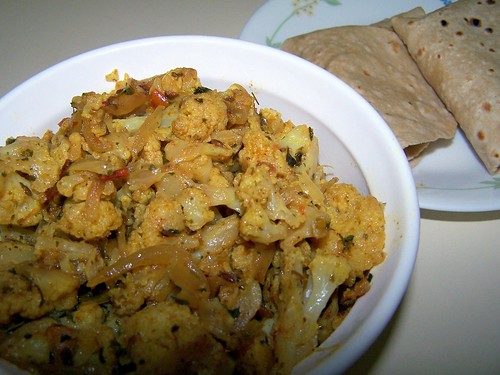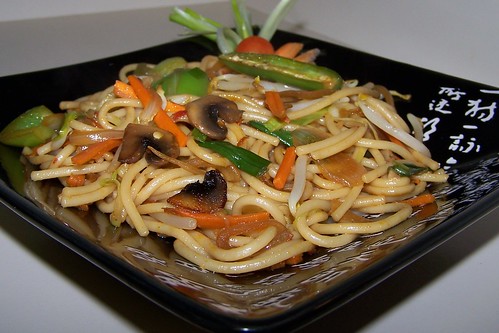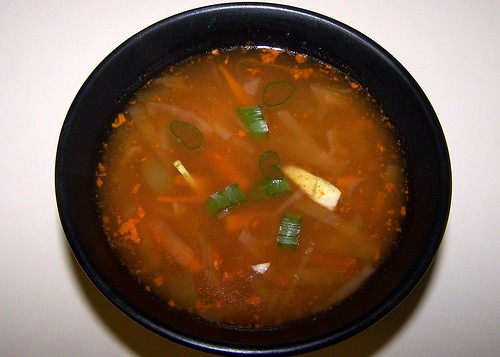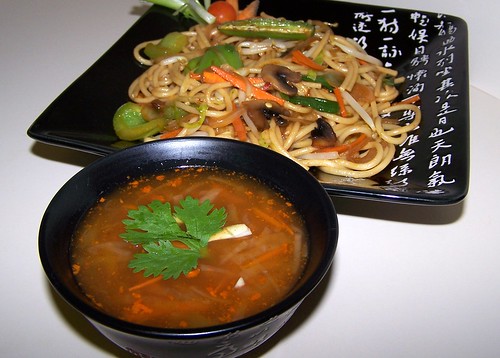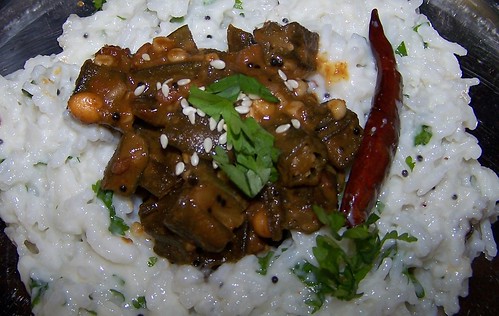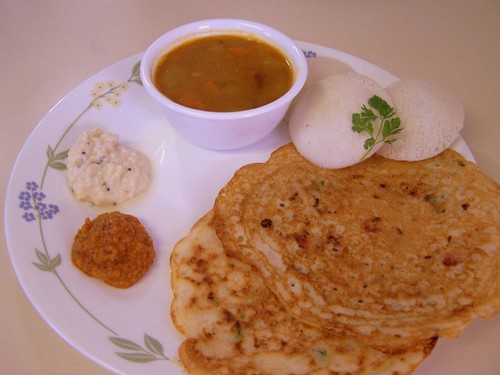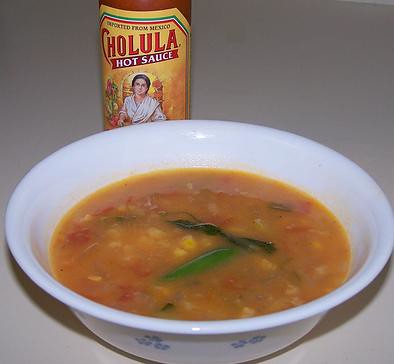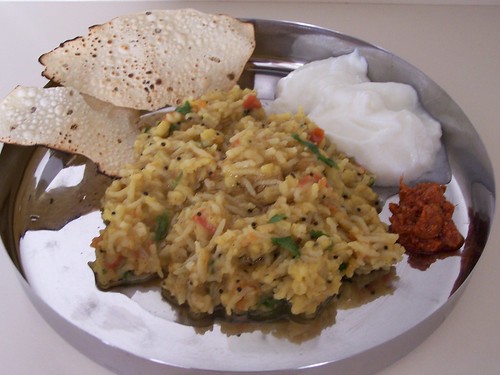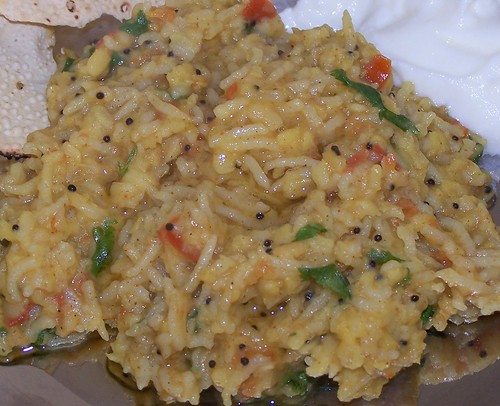The other day, we wanted to make something easy and simple. I thought of kadhai paneer (a little on the dry side with chopped onions/tomatoes etc). But he was more in the mood for the matar-paneer kind (made with onion/tomato paste). So he declared he'll make me happy and make 50-50 paneer. Here's how he made it.
Ingredients:
1. About 2 cups paneer - thawed to room temperature and cubed. We used frozen paneer bought from an Indian store ("Nanak" brand).
2. 1/2 cup green peas
3. 1 onion (medium-large). Chop half of it it very fine in a chopper and slice the other half lengthwise.
4. 2-3 tomatoes made into a paste (we put the onions and tomatoes in the chopper together, so they were chopped very fine). 1 tomato, sliced lengthwise.
5. 1 tsp grated ginger
3. Half a green bellpepper, sliced thin lengthwise.
4. Red chilli, turmeric, coriander powder and salt to taste.
5. 2 tblsp of milk (use fat free if you like, worked for us).
6. 1.5 tbsp cooking oil.
Method:
1. Heat half the oil in a non-stick pan, as it heats add ginger followed by finely chopped onions and tomatoes. Saute till oil separates, should take 7-10 minutes on medium flame. You may need to add a little more oil to actually see the oil separating :) If you don't want to use too much oil, just ensure that the color gets darker (you may have to keep sprinkling water once in a while to make sure the paste doesn't burn). We added peas also somewhere in between to make sure they get cooked (when to add them will depend on how long it normally takes your peas to cook).
2. In the meanwhile, in a frying pan heat the remaining oil. Add sliced onions and saute, followed by tomatoes and bellpeppers and a little salt. The onions should become translucent but should not cook too much.
3. Add paneer and toss on high flame. Doing this pan-fries the paneer, making it crispier on the outside and eliminating the need for any deep frying.
4. If your tomato/onion paste is done by now, add red chilli, turmeric and coriander powder and salt and saute for a few seconds.
5. Add the sliced-sauteed veggies with paneer to this and mix well, so that the masala coats the paneer.
6. Add half a cup of water and let it simmer for 5 minutes or so, water will almost dry out.
7. When almost done, add milk and let cook for a minute or two.
8. Sprinkle fresh cilantro and serve with hot thick rotis.
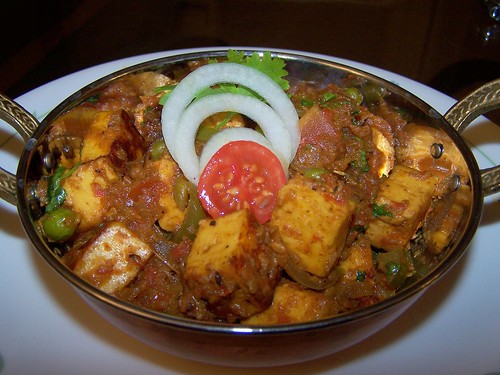
As easy as that! :) To increase the flavor, you can sprinkle some kasuri methi at the end. Or if you want it spicier you can sprinkle some garam masala.
We turned up cooking our sliced veggies more than we would have liked, but it was delicious anyways :)
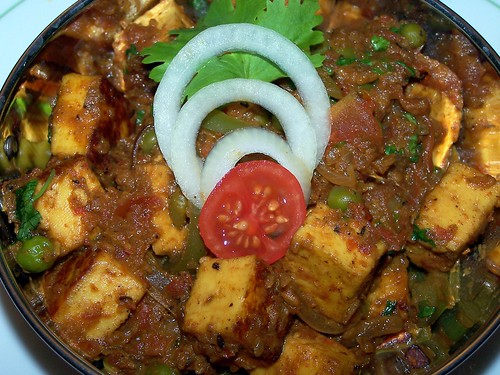
The leftovers had soaked the gravy completely making it a great candidate for kati rolls (there wasn't much left though!). While packing for lunch, I added some sliced onions and lemon juice to it. At lunchtime, I heated a roti and wrapped warm sabzi in it to make a quick, tasty kati roll!

